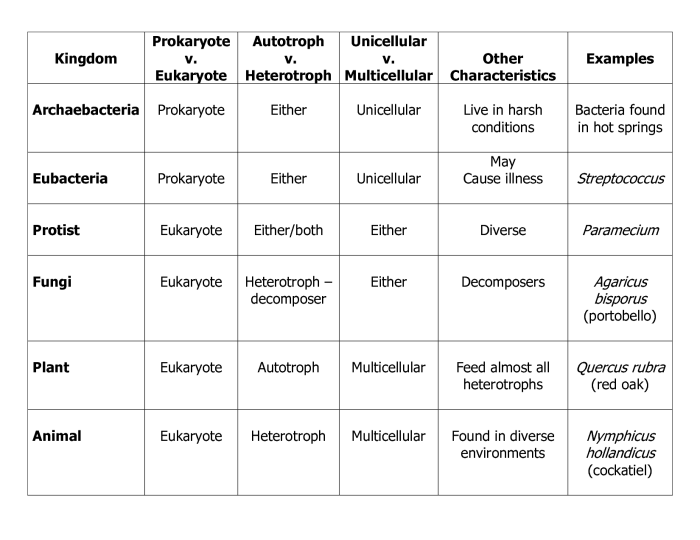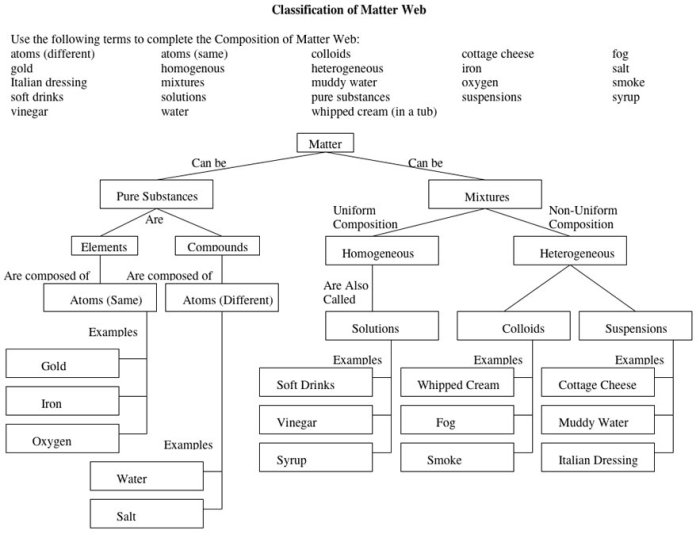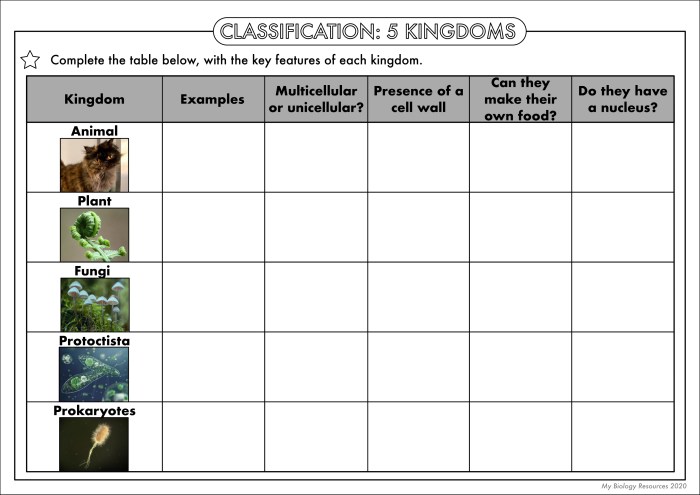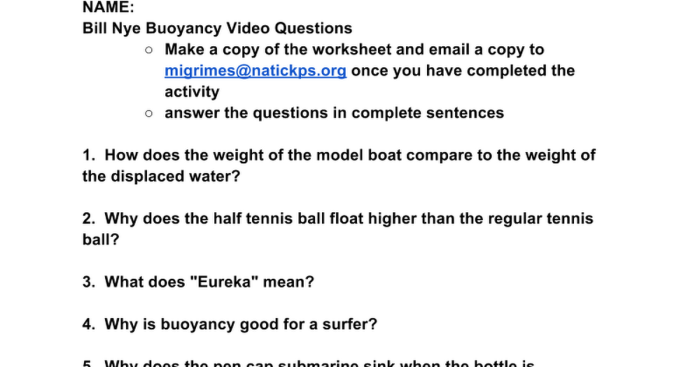Kingdom classification worksheet answer key – Kingdom classification worksheets provide a structured approach to understanding the diverse kingdoms of life. This comprehensive guide delves into the purpose, design, development, and effective use of kingdom classification worksheets, offering invaluable insights for educators and students alike.
Kingdom Classification Worksheet

A kingdom classification worksheet is a valuable tool for students to learn about the diverse array of life on Earth. It helps them understand the characteristics that distinguish different kingdoms and provides a framework for organizing and categorizing organisms.
The classification system divides all living organisms into five kingdoms: Animalia, Plantae, Fungi, Protista, and Monera. Each kingdom has its own unique set of characteristics that differentiate it from the others.
Kingdom Animalia
- Multicellular, eukaryotic organisms
- Heterotrophic, meaning they obtain energy by consuming other organisms
- Capable of movement
- Examples: mammals, birds, reptiles, amphibians, fish
Kingdom Plantae
- Multicellular, eukaryotic organisms
- Autotrophic, meaning they produce their own food through photosynthesis
- Have cell walls made of cellulose
- Examples: trees, shrubs, flowers, grasses
Kingdom Fungi, Kingdom classification worksheet answer key
- Eukaryotic organisms
- Heterotrophic, meaning they obtain energy by breaking down organic matter
- Have cell walls made of chitin
- Examples: mushrooms, yeast, mold
Kingdom Protista
- Eukaryotic organisms
- Can be autotrophic or heterotrophic
- Have a wide range of body forms, including single-celled, multicellular, and colonial
- Examples: algae, protozoa, slime molds
Kingdom Monera
- Prokaryotic organisms, meaning they lack a nucleus or other membrane-bound organelles
- Can be autotrophic or heterotrophic
- Examples: bacteria, cyanobacteria
Questions Often Asked: Kingdom Classification Worksheet Answer Key
What is the purpose of a kingdom classification worksheet?
Kingdom classification worksheets guide students in understanding the hierarchical organization of life into different kingdoms, providing a framework for classifying and studying organisms.
How should a kingdom classification worksheet be designed?
Effective worksheets feature clear instructions, well-organized content, and engaging elements such as interactive activities or visual aids.
Why is an answer key crucial for a kingdom classification worksheet?
A comprehensive answer key provides accurate and detailed solutions, allowing students to self-check their understanding and educators to assess student progress.


